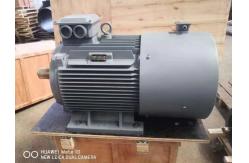High Frequency High Output Magnetic Field Permanent Magnet Generators Low Rpm
|
|
Low Rpm High Frequency High Output Magnetic Field Permanent Magnet Generators
The situation of waning fossil fuel supply and the critical environment state is making it more and more necessary to find alternative energy sources. More and more people are choosing permanent magnetic generators to replace traditional generators in some applications.
(1) Free Energy Source (2) Low Installation Fee (3) Reliable Energy Output (4) Maintenance Free
Product Drawing
Technical Parameter
Detailed Pictures What is the permanent magnet generator?The permanent magnet generator is a device that converts mechanical energy to electrical energy. In this device, the rotor windings have been replaced with permanent magnets. Permanent magnet generators are used mostly in industrial applications like turbines and engines to produce commercial electrical energy, the permanent magnet alternator is an alternate source of energy and has multiple benefits which make it a great device for a variety of residential, commercial, and industrial applications.
The structure
The permanent magnet generator is mainly composed of a rotor, end cover, and stator. The structure of the stator is very similar to that of an ordinary alternator. The biggest difference between the structure of the rotor and the alternator is that there are high-quality According to the position of the permanent magnet on the rotor, the permanent magnet generator is usually divided into a surface rotor structure and a built-in rotor structure. Working Principle
The permanent magnet generator uses the principle of electromagnetic induction in that the wire cuts the magnetic field line to induce an electric potential and converts the mechanical energy of the prime mover into electrical energy output. It consists of two parts, the stator, and the rotor. The stator is the armature that generates the electricity and the rotor is the magnetic pole. The stator is composed of an armature iron core, uniformly discharged three-phase winding, machine base, and end cover. The rotor is usually a hidden pole type, which is composed of excitation winding, iron core and shaft, guard ring, center ring, and so on. The excitation winding of the rotor is fed with DC current to generate a magnetic field close to the sinusoidal distribution (called the rotor magnetic field), and its effective excitation flux intersects with the stationary armature winding. When the rotor rotates, the rotor's magnetic field rotates together with it. Every time a revolution is made, the magnetic lines of force cut each phase winding of the stator in sequence, and a three-phase AC potential is induced in the three-phase stator winding. When the pm generator is running with a symmetrical load, the three-phase armature current synthesizes to generate a rotating magnetic field with synchronous speed. The stator and rotor fields interact to generate braking torque. The mechanical torque input from the turbine overcomes the braking torque and works. Disadvantages
While permanent magnet generators offer several benefits, they also have limitations that need to be considered. One significant drawback is their relatively low power output compared to conventional generators. Magnetic generators are best suited for small-scale applications such as powering individual homes or specific appliances.
Moreover, the initial cost of installing a magnetic generator can be higher than setting up traditional power sources. However, it is worth noting that over time, the operational costs of a magnetic generator can be significantly lower due to the absence of fuel expenses.Another consideration is the availability of suitable motion sources for continuous rotation of the rotor in magnetic generators. In some areas, finding consistent wind or water flow may pose challenges, limiting the feasibility of using these devices as primary power sources.
In conclusion, while magnetic generators offer numerous advantages such as sustainability and efficiency, they are not without limitations. When comparing them to traditional power sources like fossil fuels and renewable energy options such as solar and wind power, it becomes clear that magnetic generators excel in certain areas but may not be suitable for all applications. As technology continues to advance and overcome existing limitations, magnetic generators hold great promise for a greener future in energy production.
Application 1. Permanent magnet generators provide the ideal solution for the
Wind Industry. By matching the power and speed of the generator to that of the wind turbine, the power system becomes more efficient. No gearboxes are needed, and the efficiency of the alternator exceeds 90%.
2. Variable speed generators provide a solution for Hydro Industry. Increased efficiency from variable speed technology could make many more small hydro sites economically feasible to develop. Permanent magnet generators can be employed with turbines and hydro turbines. |
||||||||||||||||||||||||||||||||||||||||||||||||||||||||||||||||||||||||||||||||||||
| Product Tags: Low Rpm Permanent Magnet Generators IP55 Permanent Magnet Generators 400v Permanent Magnet Motor Generator |
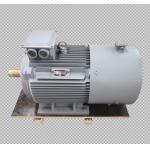
|
IP54 IP55 High Power Low Speed Permanent Magnet Generator |

|
10-3000 Kw Low Speed Permanent Magnet Generator For Electricity Generation |
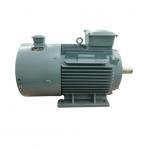
|
High Efficiency Permanent Magnet Synchronous Generator Eco Friendly |
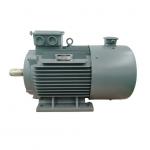
|
Low Rpm Waterproof Three Phase Ac Permanent Magnet Generators |

|
High Frequency High Output Magnetic Field Permanent Magnet Generators Low Rpm |
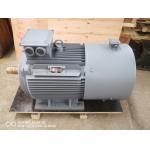
|
Hydro Turbine Permanent Magnet Electric Generator 40kw 250rpm |

